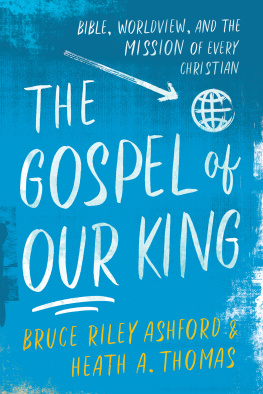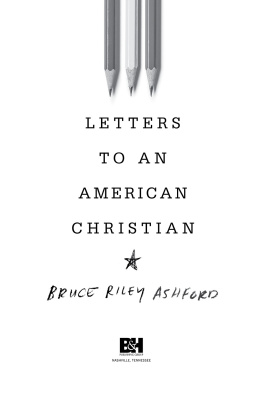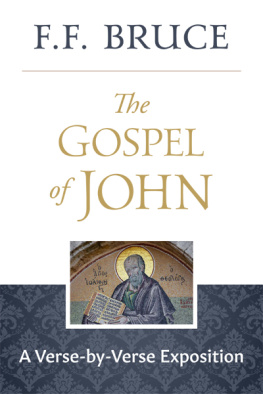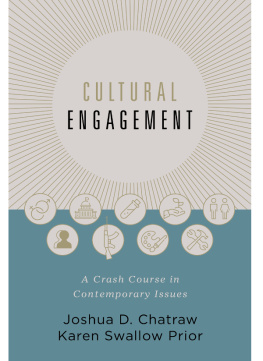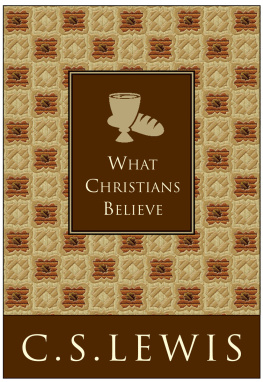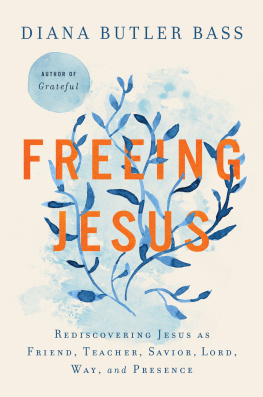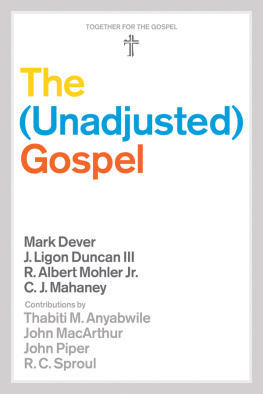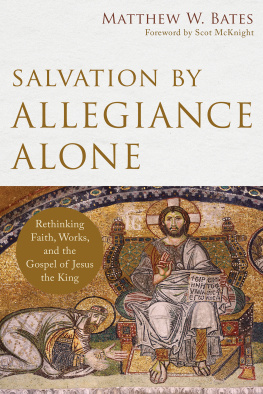Every Square Inch
An Introduction to Cultural Engagement for Christians
Bruce Riley Ashford


Every Square Inch: An Introduction to Cultural Engagement for Christians
Copyright 2015 Bruce RileyAshford
Lexham Press, 1313 Commercial St., Bellingham, WA 98225
LexhamPress.com
All rights reserved. You may use brief quotations from this resource in presentations, articles, and books. For all other uses, please write Lexham Press for permission. Email us at .
Unless otherwise noted, Scripture quotations are from the New Revised Standard Version Bible, copyright 1989, National Council of the Churches of Christ in the United States of America. Used by permission. All rights reserved.
Scripture quotations marked ( ESV ) are from The Holy Bible, English Standard Version (ESV), copyright 2001 by Crossway, a publishing ministry of Good News Publishers. Used by permission. All rights reserved.
Scripture quotations marked ( NET ) are from the NET Bible copyright 1996-2006 by Biblical Studies Press, L.L.C. All rights reserved.
Scripture quotations marked ( NKJV ) are from the New King James Version. Copyright 1982 by Thomas Nelson. Used by permission. All rights reserved.
ISBN 978-1-57-799620-0
Lexham Editorial Team: David Bomar, Lynnea Fraser
Cover Design: Jim LePage
For my son, John Paul Kuyper Ashford.
Children are a heritage from the L ORD .
( ESV )
Table of Contents
I wish to thank Brannon Ellis at Lexham Press and Amy Whitfield at Southeastern Baptist Theological Seminary for their commitment to this project. I further wish to thank Greg Forster and his team at the Kern Family Foundation, whose encouragement and support enabled this project to become a reality. I also express gratitude to my friends Devin Maddox and Dennis Greeson, who helped me take ideas that were conceived as a professor at a graduate school and express them in a way that I hope will be helpful for a broader audience.
I am grateful also for friends with whom Ive had many discussions about Christianity and culture, including Craig Bartholomew, Dennis Darville, James K. Dew, J. D. Greear, Ken Keathley, Ben Quinn, Heath Thomas, and Keith Whitfield. In addition, I wish to thank Greg Forster, Ken Keathley, Jay W. Richards, and Taylor Worley for providing expert feedback on portions of the manuscript.
Finally, I express love and appreciation for my wife, Lauren, and our three children, Riley Noelle, Anna Katherine, and John Paul Kuyper. Lauren is a constant encouragement in my writing projectsincluding this one, as she marked off one of our familys two weeks of summer vacation so that I could write the manuscript for this little book. Riley, Anna, and Kuyper are a delight to me and Lauren, and we pray that they will be able to bring the entirety of their lives under submission to Christs lordship, as a matter of love and worship toward him and as a matter of love and witness toward the world.
In 1998 , at the age of 24, I left the United States for the first time in order to become a university English instructor in Tatarstan, a predominantly Muslim republic in a Central Asian corner of Russia. I had never traveled farther west than San Antonio, farther north than the tip of Maine, farther east than Nags Head (North Carolina), or farther south than Miami. Can you imagine what a never-ending carnival of cultural wedgies the next two years were for me?
My first week in the country, for example, I was introduced to a special drink called kuhmis, which my buddies told me will taste a lot like an American milkshake. And truly, it was white and frothy just like a vanilla milkshake. But it turns out that it was white and frothy because it was fermented mares milk. At some point in history, an entrepreneur had decided to milk a horse, allow the milk to rot, and then bottle it as a delicacy. Later that week, I also was served fish gelatin for breakfast.
But before longculinary oddities asideI was immersed in a cultural context that was a mixture of Eastern European and Central Asian, and which had been shaped in various ways in the past by Sunni Islam and Soviet communism, and more recently by global capitalism and postmodernism. These religious and ideological influences shaped everything in the culture, including the arts, sciences, politics, economic, education, entertainment, family life, and even sports competitions. I found myself wondering what it would look like for me to live a faithfully Christian life in that particular context.
This small book that you are reading is written as a little introduction for Christians who wish to live faithfully in their cultural contexts. It shows how all of life matters to God, and how every Christian can serve powerfully as a representative of Christ, even if he or she is not an international missionary or a pastor. It is meant to show that God cares not only about the goings-on within the four walls of a church building but also about the goings-on in every corner of society and culture. He wants us to take seriously our interactions in the arts (music, literature, cinema, architecture, interior dcor, culinary arts), the natural sciences (biology, physics, chemistry), the social sciences (psychology, sociology), the public square (journalism, politics, economics, law), the academy (schools, universities, seminaries), sports and competition, and homemaking. Every dimension of our lives relates in some way to Christ and can in some manner be directed toward him.
Theology and Culture
In the space of two years in Russia, I began to realize even more fully the deep and resonant effects of religion upon culture, and vice versa. I was living in a social and cultural context that had been almost entirely devoid of evangelical gospel influence for generations. Conversations with many of my students revealed a deep skepticism about whether God existed, whether life had any meaning, and whether there are any moral absolutes. The institutions of this countryincluding its government, businesses, marriages, and schoolsreflected this deep sense of loss, this sense that its people could no longer believe in a God who endowed their lives with meaning and purpose or who gave a moral law by which all people and institutions should abide.
During this time, I began to read books by Christian thinkers such as Abraham Kuyper, Francis Schaeffer, and C. S. Lewis. (On my journey to Russia, I carried one suitcase of clothes and four suitcases of books.) Kuyper lived in 19th-century Holland and served as prime minister of the Netherlands, founded a Christian university, started a newspaper, and wrote influential books on theology, art, science, and many other topics. His deepest convictions might be summed up in one sentence: Jesus Christ is Lord of all, and because of that fact, every aspect our lives should be affected by the fact that we are Christians. If Christ is Lord, he is Lord over our work and our leisure, our families and friendships, our goings-on inside the four walls of a church building and outside those walls. He is not just the Lord over certain religious things, but Lord over art, science, politics, economics, education, and homemaking. Kuyper gave me my first insight into the fact that Jesus Christ is relevant to every dimension of society and culture, and that for this reason we should allow our Christianity to shape absolutely everything we do.


